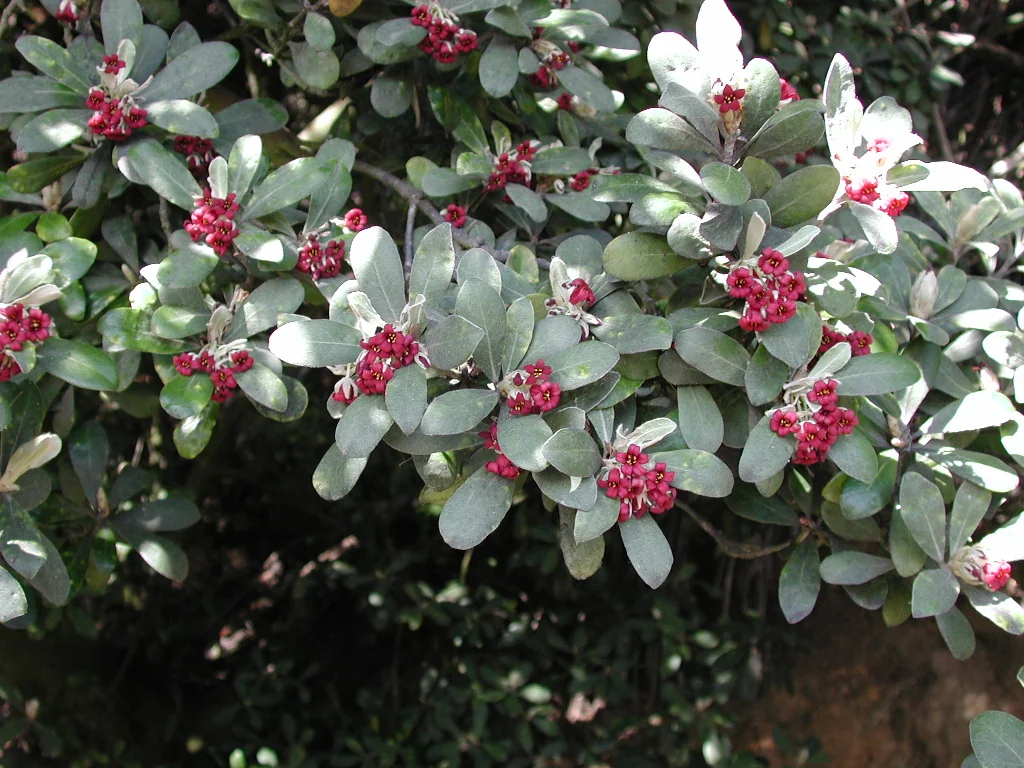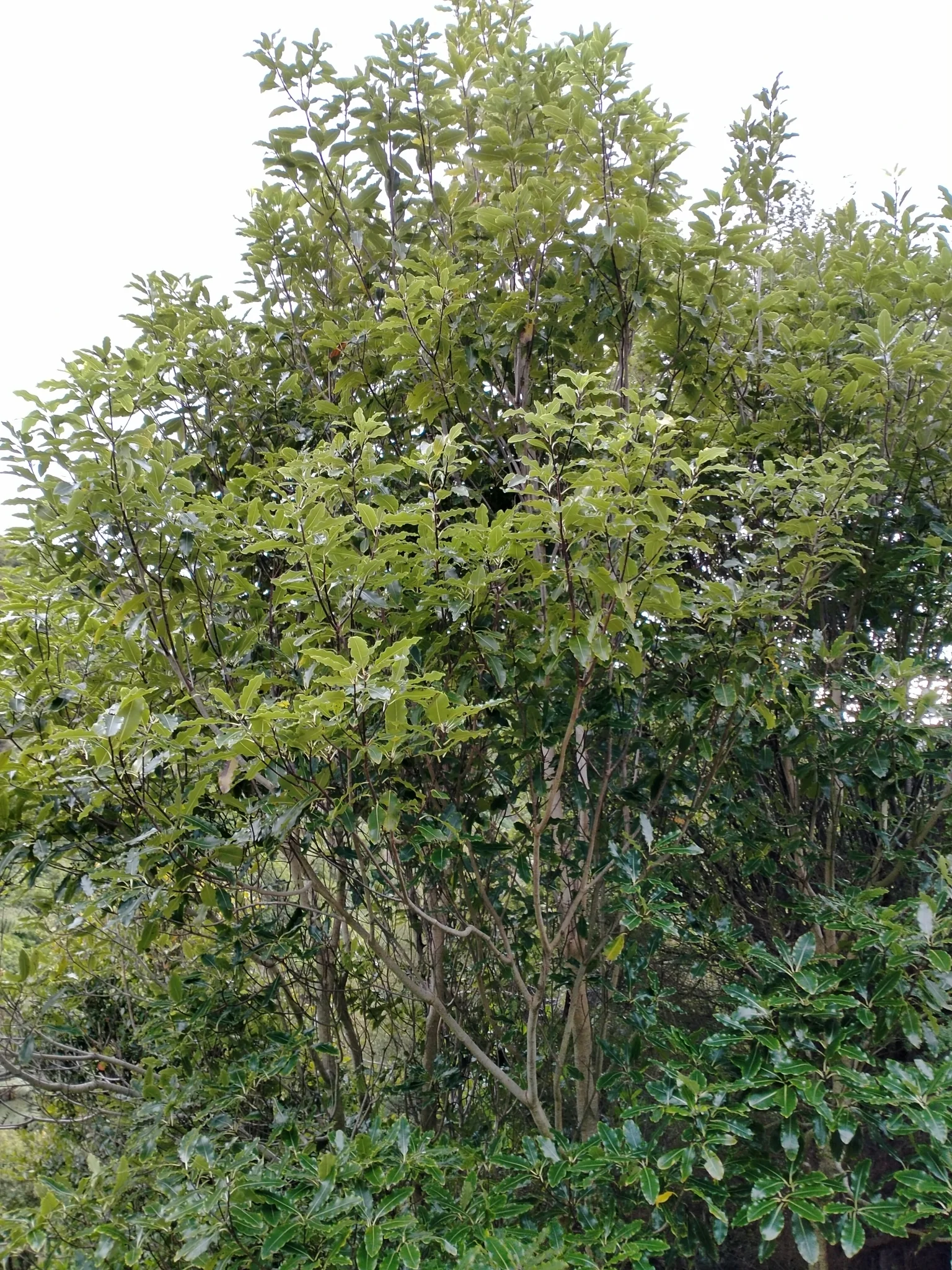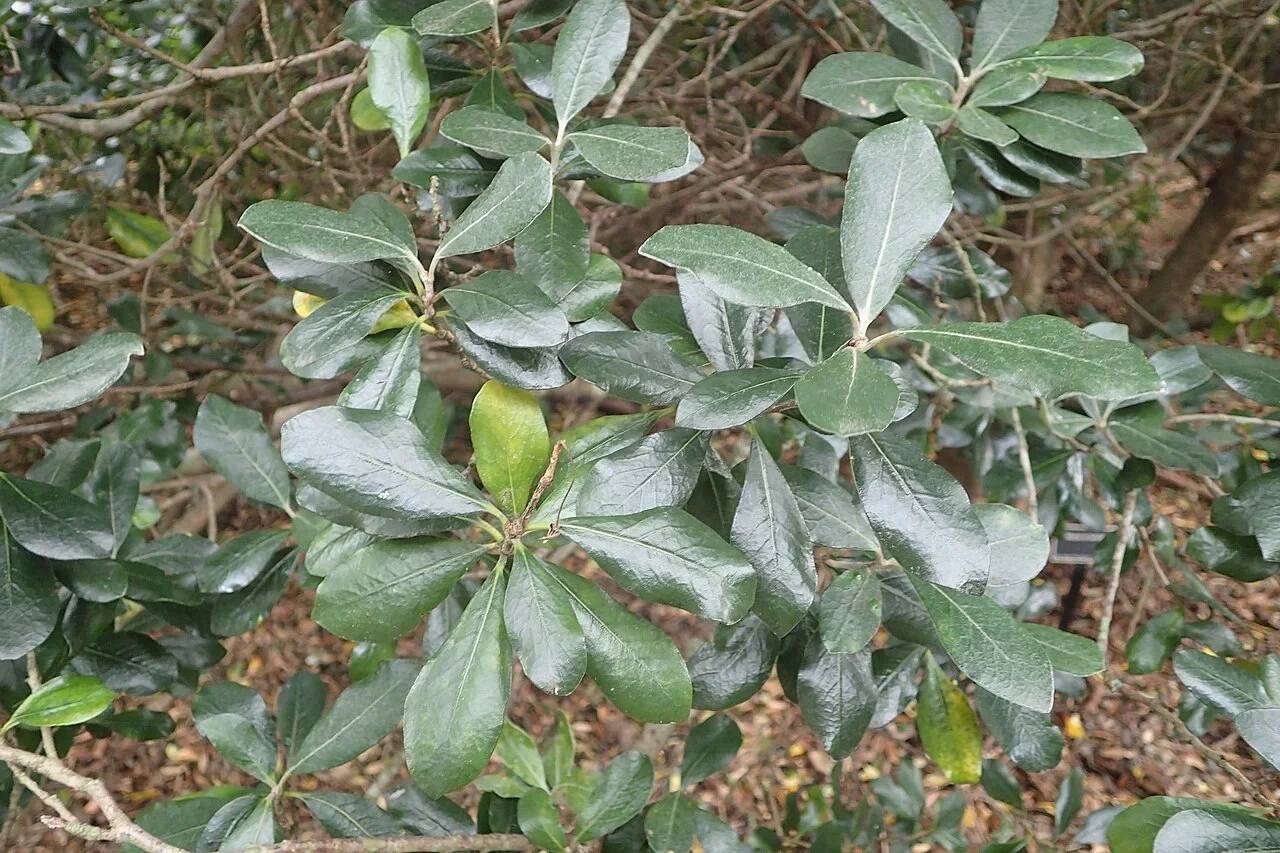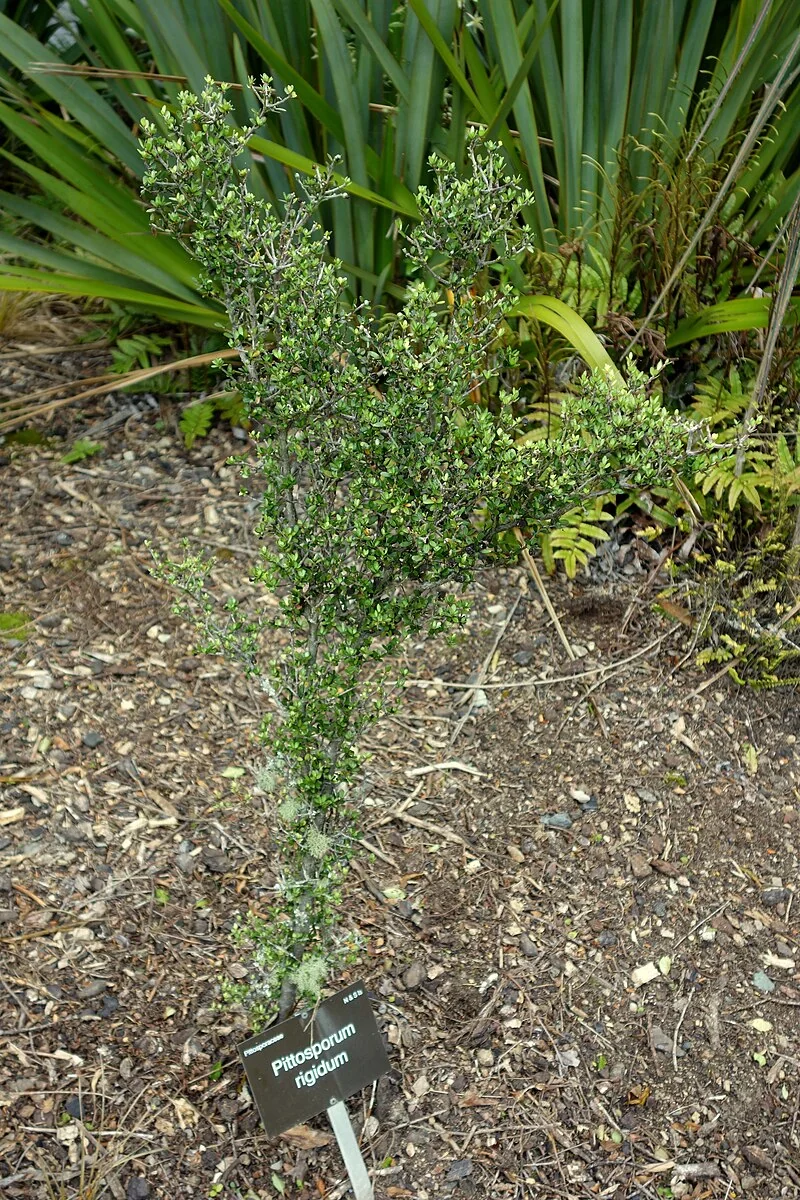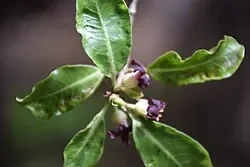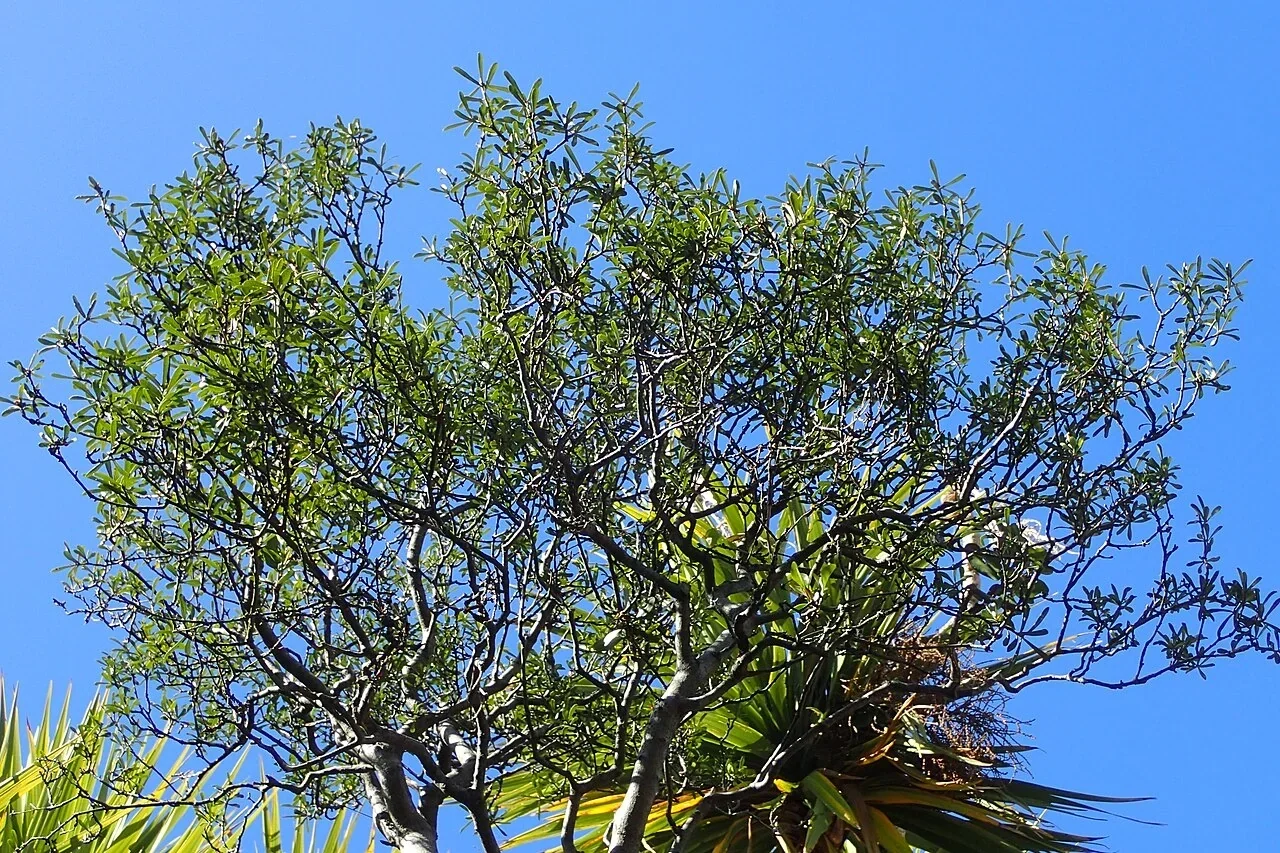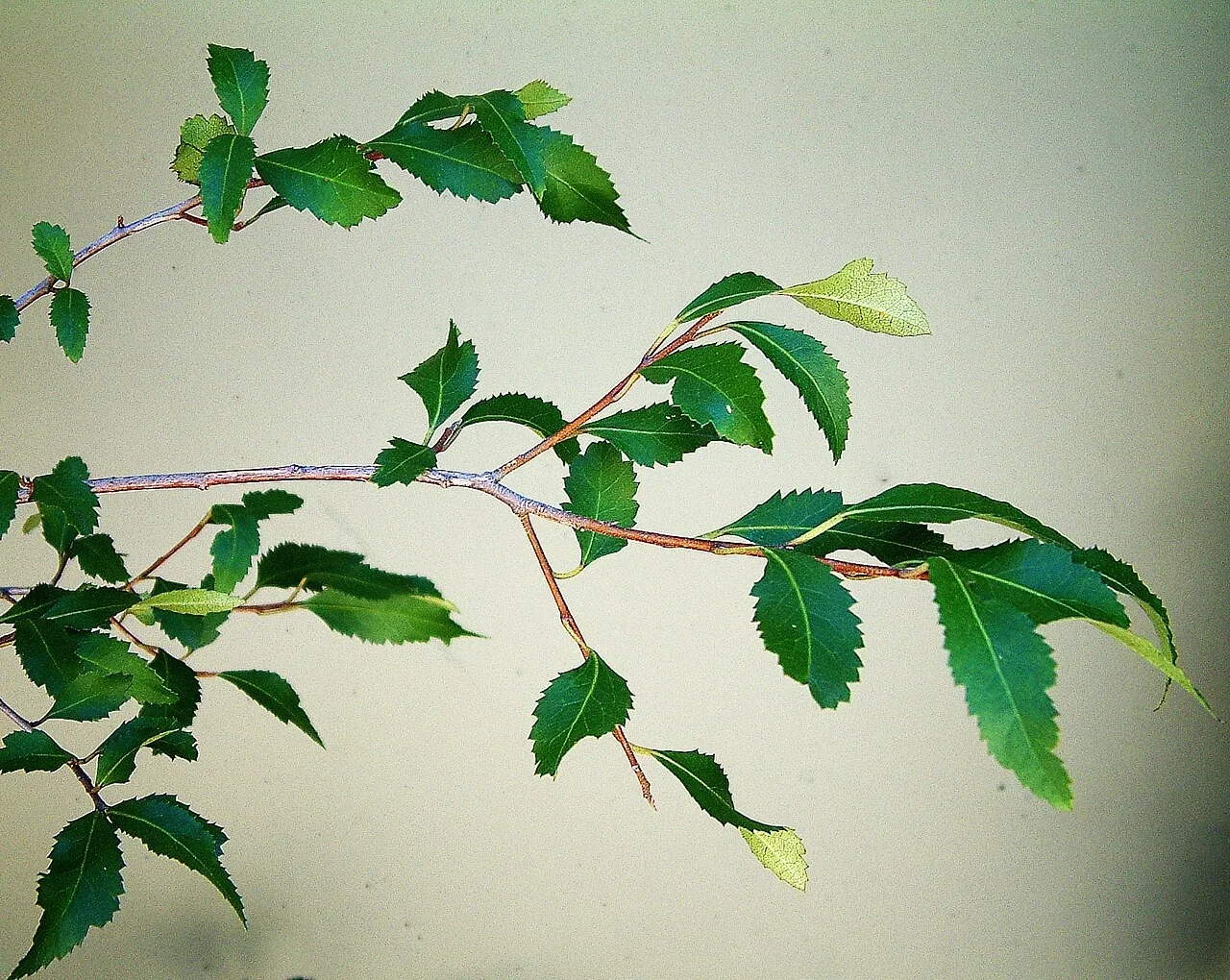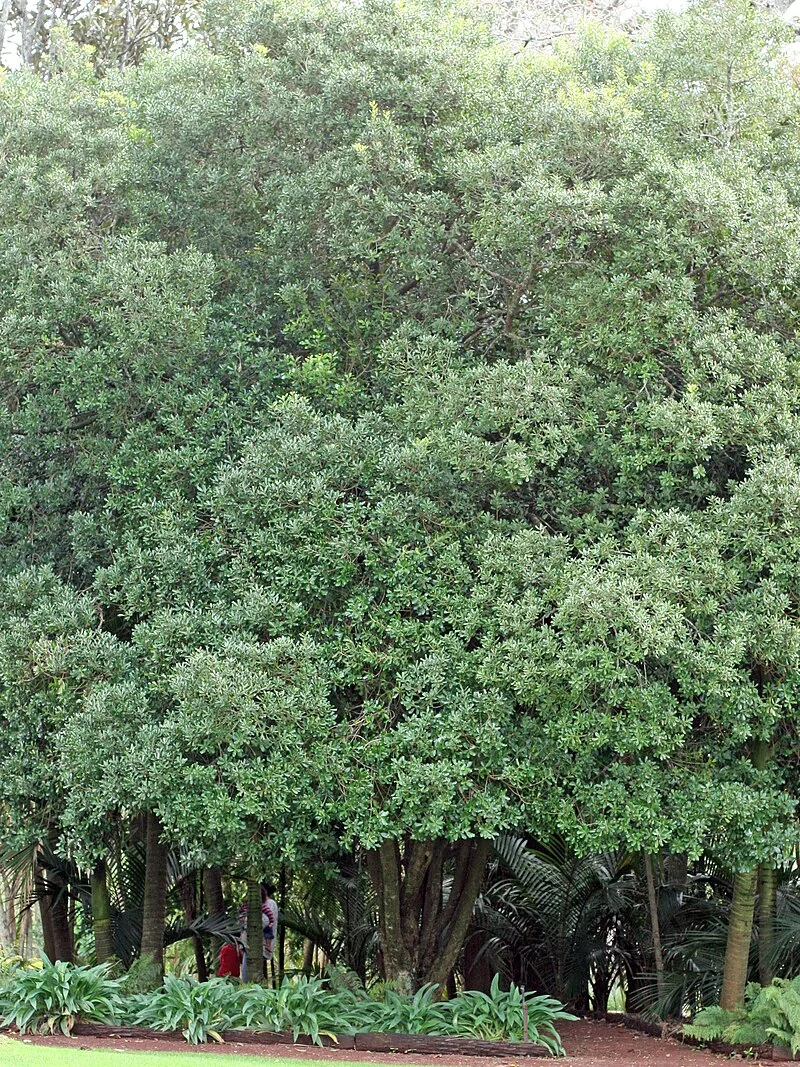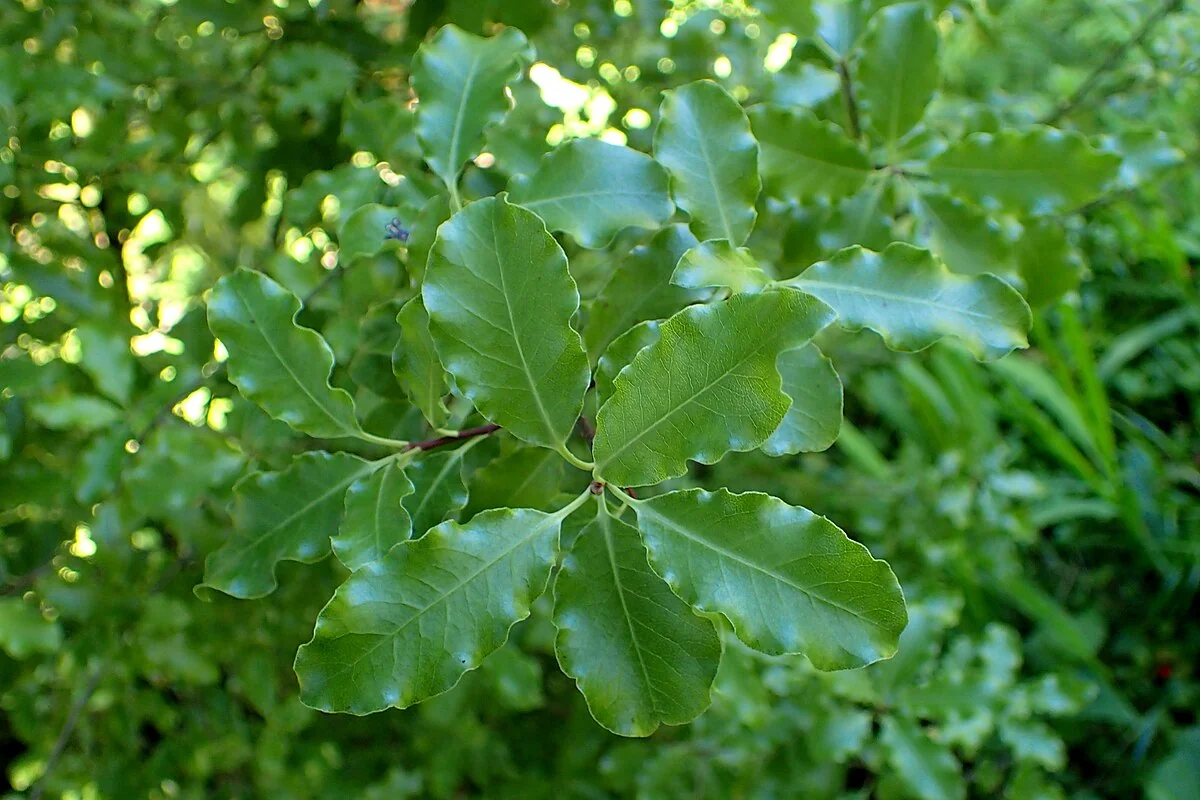
Pittosporum Colensoi
Pittosporum colensoi
Rautāwhiri (scientific name: Pittosporum colensoi) Rautāwhiri is a distinctive native pittosporum with narrow, lance-shaped leaves and dark red to purple flowers. It grows in montane and subalpine areas, creating an attractive specimen tree with its upright growth habit and striking foliage. Explore more in the native plants index.

Plant Description
Botanical Features
Pittosporum Colensoi (Pittosporum colensoi) is a small, evergreen tree or shrub native to New Zealand. It is characterized by its flat, leathery, oval leaves, which are typically 4-10 cm long and 2-5 cm wide, and paler on the underside. The foliage can develop from a bright green to a mature deep purple. This plant produces dark purple, star-shaped flowers. These are often described as small, fragrant, and bell-shaped, appearing in masses through summer. Following the flowers, it develops hard, spherical, woody capsules about 12mm wide that split into three to reveal black seeds embedded in a sticky pith. It is a resilient plant that thrives in well-drained soils, tolerates coastal winds, and can grow in partial shade. It can reach a height of up to 5 meters and a width of 3 meters, with a medium growth rate.
Quick Facts
Overview
| Scientific Name | Pittosporum colensoi |
|---|---|
| Height | 3-6 m |
| Spread | 2-4 m |
| Water Needs | Moderate |
| Light | Partial shade to full sun |
| Frost Tolerance | Good |
| Salt Tolerance | Poor |
| Growth Rate | Moderate |
| Lifespan | Long-lived |
Climate Best Suited to
Regional climate suitability across major New Zealand cities.
Regional Suitability
| City | Climate Suitability |
|---|---|
| Whangārei | Ideal |
| Auckland | Ideal |
| Hamilton | Ideal |
| Tauranga | Ideal |
| Rotorua | Ideal |
| Gisborne | Ideal |
| New Plymouth | Ideal |
| Napier | Ideal |
| Whanganui | Ideal |
| Palmerston North | Ideal |
| Wellington | Ideal |
| Nelson | Ideal |
| Christchurch | Ideal |
| Dunedin | Ideal |
| Invercargill | Ideal |
Natural Habitat
Pittosporum Colensoi (Pittosporum colensoi), also known as Rautāwhiri, is a small, evergreen tree or shrub endemic to New Zealand. It is typically found in forest margins and lowland to montane forests, often in successional habitats, across both the North and South Islands, up to an altitude of 3,500 feet (approximately 1,067 meters).
Preferred Conditions:
- Well-Drained Soils: This resilient plant thrives in well-drained soils, indicating its preference for sites where water does not accumulate.
- Coastal Tolerance: It can tolerate coastal winds, making it suitable for areas near the coast, though it is not explicitly stated to be salt-tolerant.
- Light Conditions: It prefers partial shade but can also grow in full sun, showcasing its adaptability to varying light levels within its natural environment.
Distribution:
- Widespread: Its distribution across both the North and South Islands highlights its adaptability to a range of climatic conditions within New Zealand.
- Forest Margins and Lowland to Montane Forests: It is a common component of these forest types, often found in areas where there is some disturbance or transition, such as the edges of forests or regenerating areas.
The presence of Pittosporum colensoi in these diverse habitats underscores its ecological flexibility and its role in contributing to the biodiversity of New Zealand's native forests.
Plant Conservation
Pittosporum colensoi is currently classified as "Not Threatened" according to the 2017 conservation status assessment by the NZPCN. This status has been consistent in previous assessments from 2004, 2009, and 2012 as well. It is an endemic vascular plant to New Zealand.
Growing Requirements
Soil Requirements
Rautāwhiri prefers free-draining soils rich in organic matter but is remarkably adaptable to most soil types. It naturally occurs on forest margins from lowland to montane areas, favoring damp conditions but not waterlogged soils.
- Prefers freedraining soils rich in organic matter
- Tolerates most soil types except extremely wet conditions
- Benefits from damp but not waterlogged conditions
- Adaptable to both lowland and montane forest soils
- Mulch to retain moisture and suppress weeds
Light Requirements
Rautāwhiri grows well in both full sun and partial shade, making it versatile for various garden positions. It naturally occurs on forest margins where light conditions vary throughout the day.
- Full sun to partial shade tolerance
- Forest margin conditions ideal
- Adaptable to varying light levels
- Benefits from some protection in very hot, exposed sites
Water Requirements
Water regularly during establishment, especially in the first year. Once established, Rautāwhiri is relatively drought-tolerant but performs best with consistent moisture during dry periods.
- Regular watering essential during first year for establishment
- Moderate water needs once established
- Droughttolerant but benefits from irrigation in dry spells
- Avoid waterlogged conditions which can cause root problems
- Favors damp but welldrained conditions
Planting Guide
Pittosporum Colensoi, also known as Rautāwhiri, is a resilient and attractive native New Zealand tree that is relatively easy to grow, making it suitable for various planting scenarios, including hedging, screening, and specimen planting. Its unique foliage and fragrant flowers make it a rewarding addition to any native garden.
1. Site Selection and Soil:
- Sunlight: Pittosporum Colensoi thrives in full sun to partial shade. For the best foliage color and flowering, a position with ample sunlight is ideal.
- Soil Type: It adapts to various soil types but prefers well-drained, loamy soil with a neutral to slightly acidic pH (5-7). Good drainage is crucial to prevent root rot. If your soil is heavy or doesn't drain well, amend it with organic material about 1 meter deep to improve drainage and enrich the soil.
- Hardiness: It is hardy down to -8°C and is quite tolerant of sandy soil, clay, hot and dry conditions, salt spray, and wind.
- Suggested Uses: Ideal for city and courtyard gardens, coastal areas, hedging and screens, and wall-side borders.
2. Planting Process:
- Timing: The best time to plant Pittosporum Colensoi is from early to late summer, ensuring warm soil and stable weather. Autumn planting is also suitable in milder climates.
- Hole Preparation: Dig a hole that is at least 50-75% deeper and wider than the plant's current container.
- Soil Amendment: Incorporate organic matter like garden compost or well-rotted manure into the general planting area to help retain moisture and improve drainage.
- Gentle Handling: Handle the plant gently to minimize stress during transplanting.
- Container Planting: For smaller cultivars in containers, choose a pot only slightly larger than the rootball (2.5-5cm larger). Use a peat-free compost, possibly with added John Innes, or a 50:50 mix of John Innes No. 3 and peat-free multipurpose compost. Repot into a slightly larger container every two to three years in spring as roots fill the pot.
3. Watering:
- Consistency: While drought-tolerant once established, Pittosporum Colensoi thrives with consistent moisture, especially in spring and summer.
- Avoid Overwatering: Do not overwater; ensure the topsoil has sufficiently dried out between waterings. Overwatering is a common cause of wilting and browning.
- Newly Planted: Water newly planted Pittosporum Colensoi 3-4 times a week for the first couple of months, then reduce to about once a week.
- Winter: Cut back on watering in winter.
4. Fertilizing:
- Young Plants: Young plants benefit from extra phosphorus to encourage root development. Apply a fertilizer with phosphorus (the second number in the N-P-K ratio) at planting or during the first growing season.
- Established Plants: Established plants can benefit from fertilization. Apply a balanced, slow-release fertilizer (e.g., 8-8-8) each spring. Use the lowest concentration unless there's a nutrient deficiency, as over-fertilization can increase vulnerability to pests and diseases. Apply when the soil is moist for optimal absorption.
- Avoid Late Season Fertilization: Do not fertilize late in the growing season, as it can promote lush growth that won't harden off before cold weather.
5. Pruning:
- Timing: Prune in early spring to shape the plant, manage growth, and remove dead or damaged branches. This timing allows for quick recovery before the active growing season.
- Technique: Thin interior branches to improve light penetration and air circulation, which reduces disease risk. Regular pruning encourages dense, vigorous growth and maintains the desired size.
- Hedges: For hedges, shear off the top 2-6 inches several times during the first two seasons to promote branching. Cut the sides at an angle, flaring out at the bottom, to ensure healthy growth all the way down.
Ecological Role
Pollination and Dispersal
Dark red-purple flowers attract night-flying insects, while the woody capsules split to reveal sticky black seeds that adhere to perches and are taken by birds, aiding local dispersal across montane forest edges.
Habitat Contribution
In subalpine scrub and upland forest margins, Pittosporum colensoi adds evergreen structure and shelter, providing cover for invertebrates and small birds in otherwise wind-exposed habitats.
Uses and Significance
Rautāwhiri plays an important role in native forest ecosystems, providing habitat and food sources for native birds and insects. Its dark purple flowers attract pollinators, while the seed capsules provide food for birds when they split to reveal black seeds.
Cultural and Historical Significance
Named in honor of William Colenso, a prominent 19thcentury missionary, botanist, and explorer who contributed significantly to New Zealand's botanical knowledge. The Māori name Rautāwhiri reflects its traditional recognition by indigenous peoples.
- Named after William Colenso, important New Zealand botanist
- Māori name Rautāwhiri indicates traditional cultural significance
- Part of New Zealand's endemic flora heritage
- Historical importance in botanical exploration of New Zealand
Landscape and Garden Uses
Rautāwhiri is excellent for native gardens, hedging, and screening applications. Its moderate growth rate, attractive foliage, and distinctive dark purple flowers make it valuable for both formal and informal landscape designs.
- Outstanding hedge plant with dense, even growth
- Excellent screening plant for privacy and wind protection
- Feature tree for native gardens and forest gardens
- Suitable for coastal plantings with wind tolerance
- Lowmaintenance specimen tree for parks and reserves
- Good for riparian plantings along streams and waterways
Landscaping Ideas
Hedges and Shelter
Use as a clipped hedge or informal screen in cool, elevated gardens. Its narrow leaves and upright habit respond well to pruning, forming dense shelter with seasonal flower interest.
Native Structure Plant
Combine with mountain hebes, Coprosma, and small-leaved Pseudopanax to create layered montane-style plantings on free-draining soils.
Seasonal Care Calendar
Spring
Spring is the ideal planting season for Rautāwhiri, allowing the tree to establish strong roots before summer. This is also when new growth begins and hedging plants may benefit from formative pruning.
- Optimal planting time for new trees
- Begin regular watering schedule for new plantings
- Apply organic mulch around base
- Light formative pruning for young trees
- First of three annual hedge trims if grown as hedge
Summer
Summer requires attention to watering, especially for newly planted trees. The tree is actively growing and may need light shaping. This is also when semihardwood cuttings can be taken for propagation.
- Monitor watering needs, especially for young plants
- Take semihardwood cuttings for propagation
- Second hedge trim for dense growth
- Light pruning for shape if needed
- Watch for any pest or disease issues
Autumn
Autumn is another good planting season and the time for the final hedge trim of the year. The tree begins to slow its growth as temperatures cool, and fruiting may occur from previous year's flowers.
- Second optimal planting season
- Final hedge trim for the year
- Reduce watering frequency as growth slows
- Continue taking semihardwood cuttings early in season
- Apply winter mulch if in cold areas
Winter
Winter is the dormant season for Rautāwhiri. Flowering occurs from November to December, making late winter/early spring an exciting time to watch for the distinctive dark purple blooms.
- Minimal care required during dormant period
- Watch for flowering from November onwards
- No regular watering needed except in very dry conditions
- Good time for structural pruning if needed
- Plan garden improvements for spring
Pruning and Maintenance
Techniques and Timing
Rautāwhiri requires moderate pruning depending on its intended use. When grown as a hedge, regular trimming is essential for dense growth. As a specimen tree, it needs only light shaping and maintenance pruning.
- For hedging: prune 3 times per year (spring, summer, autumn)
- For specimen trees: light shaping and maintenance pruning only
- Remove dead, damaged, or crossing branches as needed
- Prune after flowering to avoid removing flower buds
- Light formative pruning beneficial for young trees
- Sterilize pruning tools to prevent disease spread
- Responds well to regular trimming with dense growth
How to Grow Pittosporum Colensoi
Pittosporum Colensoi, also known as Rautāwhiri, is a distinctive native pittosporum with narrow, lance-shaped leaves and dark red to purple flowers. It grows in montane and subalpine areas, creating an attractive specimen tree with its upright growth habit and striking foliage. This resilient and ecologically important tree adds a touch of natural elegance and year-round interest to any landscape, showcasing the rich biodiversity of New Zealand's forests. Understanding its propagation methods is key to successfully growing this delightful species.
From Seed
Propagating Pittosporum Colensoi from fresh seed is a viable method, though the sticky coating around seeds should be removed as it acts as a germination inhibitor. Collect ripe capsules when they split (January-April). Extract black seeds and remove sticky coating thoroughly. Sow fresh seeds immediately in a well-draining seed-raising mix. Maintain consistent moisture in the seed tray and provide bright, indirect light. Germination may be slow, so patience is required. Transplant seedlings once they are large enough to handle.
From Cuttings
Semi-hardwood cuttings are a reliable method for propagating Pittosporum Colensoi, ensuring that new plants retain the exact characteristics of the parent. Take 10 cm long cuttings from current season's growth in late summer to early autumn. Select semi-hardwood material (not too soft, not fully hard). Remove lower leaves, keeping 2-3 leaves at the top. Dip in rooting hormone for better success rates. Plant in a well-draining propagation mix. Maintain humidity and provide bright, indirect light. Roots typically develop within 6-12 weeks. Avoid water propagation as Pittosporums do not root well in water.
Pests and Diseases
Pittosporum colensoi can suffer frost-burn when young; a windcloth screen for the first two winters helps. In heavy soils, root stress invites scale - improve drainage and rinse leaves with a firm water blast rather than spraying oils on tender flush.
Cultural Significance
While Pittosporum colensoi is a native New Zealand shrub or small tree, readily found in its natural habitat and cultivated for ornamental purposes, there is no widely documented specific cultural significance or traditional Māori uses directly attributed to this particular species in the available information.
The plant is named after William Colenso, a notable Cornish missionary, printer, botanist, explorer, and politician in New Zealand. While other Pittosporum species, such as Tarata (P. eugenioides) and Karo (P. crassifolium), were valued by Māori for their fragrance and used in scents or body lotions, similar specific uses for Pittosporum colensoi are not explicitly documented in primary references.
Bonus Tip
The species name "colensoi" honors William Colenso, a notable missionary, printer, botanist, explorer, and politician in New Zealand. Its foliage can transition from bright green to a mature deep purple, making it a distinctive addition to gardens.
